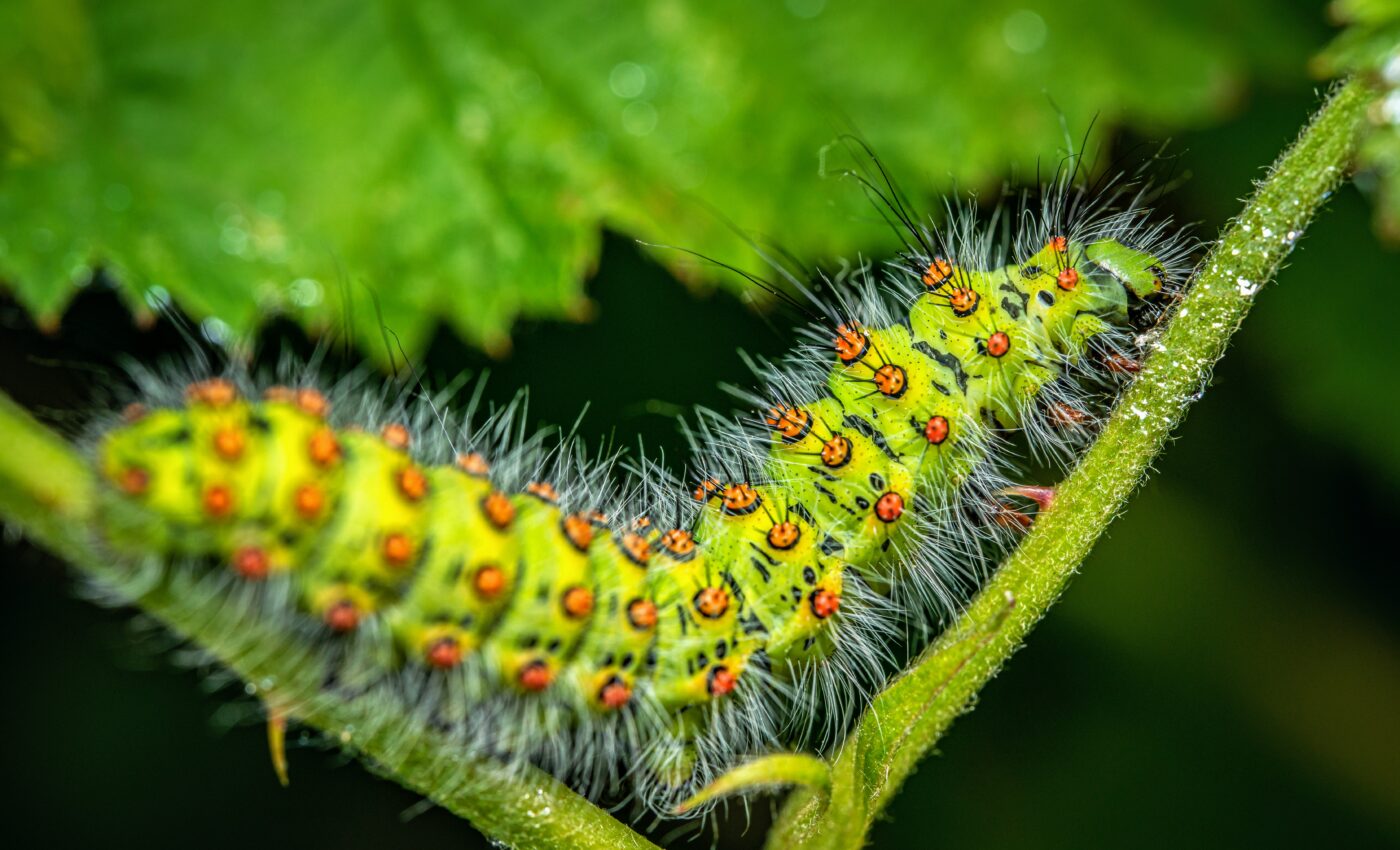
Insects had sophisticated defense strategies 100 million years ago
Insect larvae were already using sophisticated defense tactics during the Cretaceous period about 100 million years ago, according to a new study.
This discovery, stemming from detailed analyses of Burmese amber fossils, highlights the early emergence of various survival strategies among the tiny creatures, crucial to our ecosystems even today.
The crucial role of insect larvae
Insect larvae play a wide range of ecological roles, including predator and prey. They are critical for maintaining ecosystem health and biodiversity.
Insect larvae are instrumental in decomposing dead matter and wood, contributing significantly to soil formation and the recycling of essential elements. Furthermore, they serve as a primary food source for birds, fish, mammals, and other insects.
Insect defense mechanisms
Faced with the constant threat of predation, many insect larvae have evolved an array of defense mechanisms.
These include physical features such as spines and hairs and behavioral strategies like camouflage and concealment. Over millions of years, this has led to a diverse range of adaptations aimed at survival.
A collaborative study by LMU, the University of Greifswald, and the University of Rostock sheds new light on early defense strategies used by Holometabolan larvae.
This group includes insects that experience a complete metamorphosis through egg, larva, pupa, and adult stages.
“Holometabolan larvae are a major part of the animal biomass and an important food source for many animals. Many larvae evolved anti-predator strategies and some of these can even be recognized in fossils,” noted the researchers.
Focus of the study
The research was focused on well-preserved holometabolan larvae in 100-million-year-old Kachin amber from Myanmar. The team analyzed these fossils to identify defensive specializations, and also to gain insights into the behavior of ancient predators and prey.
“From the Cretaceous onward, ambers start to provide a window to the larval forms of Holometabola in the past in an almost life-like manner. While there are older ambers, these have so far not included holometabolan larvae,” wrote the study authors.
“Among the different Cretaceous ambers, Kachin amber, found in Myanmar and being around 100 million years old, has been especially productive in providing examples of holometabolan larvae that possess different types of anti-predator structures or allow to infer anti-predator types of behavior.”
Key findings about insect defense
By examining the exceptionally preserved fossils, the researchers determined that anti-predator mechanisms were already highly varied during the Cretaceous period.
“A particularly spectacular example is by far the oldest larva of a scorpionfly to have been discovered, which is the second fossil ever found to have special hairs on its back for attaching camouflage material,” said study lead author Professor Carolin Haug.
“Also, I could mention sawfly larvae that lived in leaves and created tunnels in them as they ate their way through the thin layer of the leaf interior.”
This research marks a significant advancement in our understanding of ancient insect larvae and their survival strategies, offering insights into the evolutionary pressures that shaped the insects we see today.
“The repetitive independent evolution of similar strategies in distantly related lineages indicates that several strategies evolved convergently as a result of similar selective pressures,” noted the researchers.
Implications for understanding biodiversity
“Observing the diversity of the past and the emergence and disappearance of various morphologies helps us better understand these processes, which is particularly important in view of the ongoing biodiversity crisis,” said Professor Haug.
The study not only reveals the ancient diversity of defensive strategies among insect larvae but also contributes to a broader understanding of evolutionary processes.
“A point to be emphasized is that although we see many anti-predator strategies we know from modern faunal components, they are not necessarily performed by directly related forms. Instead, it appears that many strategies have evolved repetitively independently due to convergent evolution,” wrote the study authors.
“Such a pattern indicates that there are especially successful strategies that have been employed by many lineages, also many modern lineages, and that evolved repetitively. In contrast to that, there are also strategies that are rarer, especially among holometabolans.”
The study is published in the journal iScience.
—–
Like what you read? Subscribe to our newsletter for engaging articles, exclusive content, and the latest updates.
Check us out on EarthSnap, a free app brought to you by Eric Ralls and Earth.com.
—–













